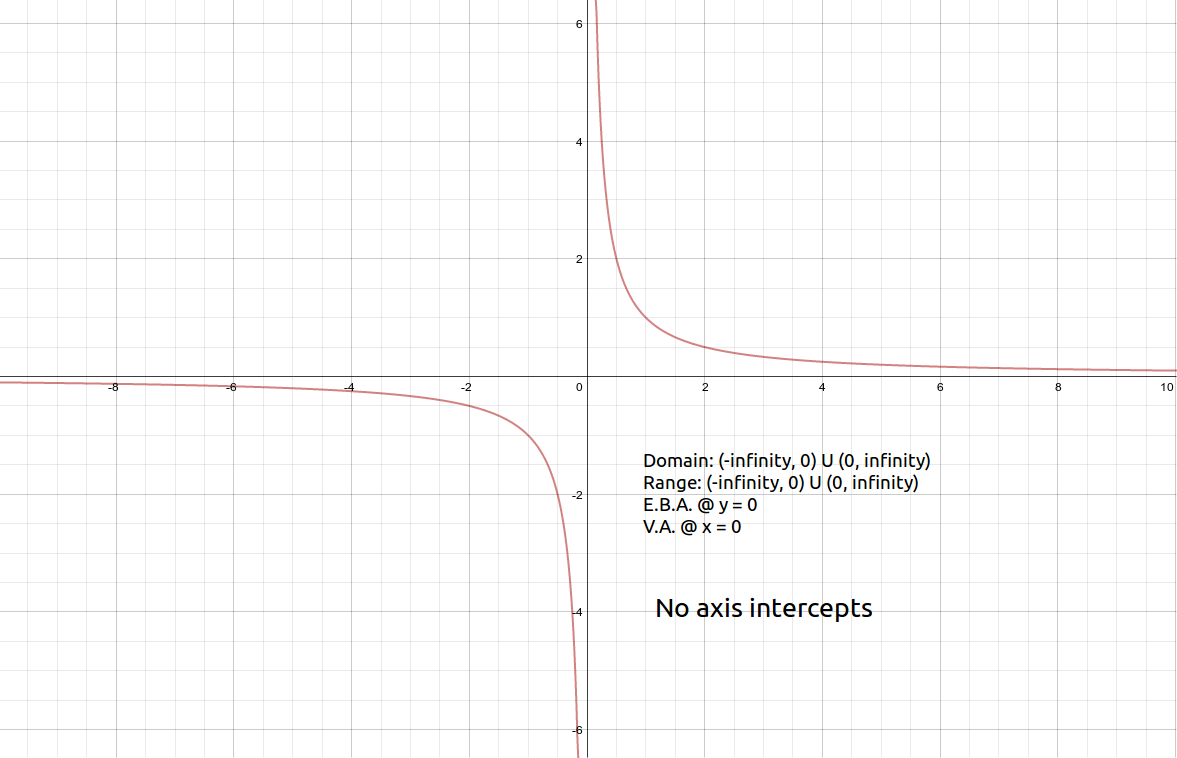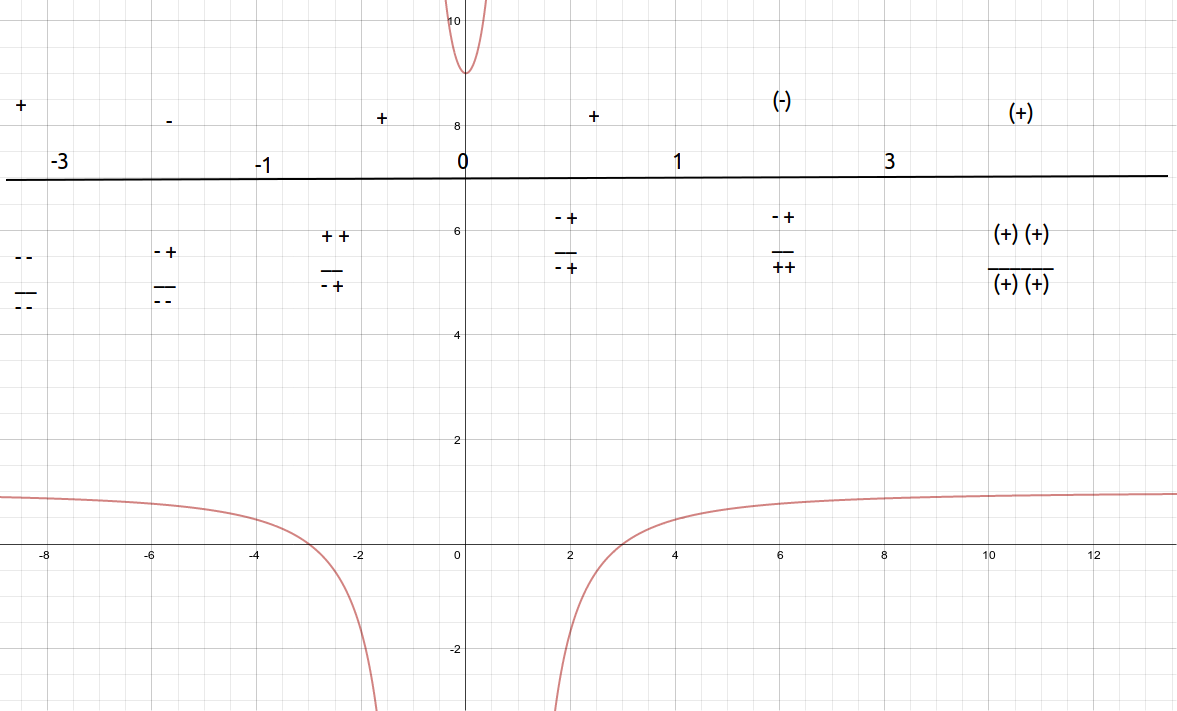Rational Functions, Their Graphs, And Applications¶

Graphs of rational functions including all intercepts and asymptotes¶
Source: I remembered the reciprocal function from the 12 basic functions, so I got it from there.
Explanation:
This artifact demonstrates graphs of rational functions including all intercepts and asymptotes.
There is an asymptote at \(x = 0\) because if x were ever 0 the function would be undefined (you can’t divide by zero).
There is an asymptote at \(y = 0\) because the numerator is 1. One slice of the pie is larger than 0 slices of the pie.
There is no x-intercept and there is no y-intercept because of the asymptotes (y = 0, and x = 0).
Artifact:
\(\text{Graph of }f(x) = {1 \over x}\)

Algebraic manipulation of rational functions¶
Source: Notes
Explanation:
This artifact demonstrates algebraic manipulation of rational functions.
Here I demonstrate that I find rational zeroes by manipulating a rational function into linear factors.
Artifact:
Find all of the rational zeroes for \(t(x) = 3x^3 + 4x^2 - 5x -2\)
Using the rational zero theorem: \(\pm1, \pm2 \over \pm1, \pm3\)
Synthetic Division (\({3x^3 + 4x^2 - 5x -2 \over (x-1)}\))
| 3 | 4 | -5 | -2 |
|---|---|---|---|
| 0 | 3 | 7 | 2 |
| 3 | 7 | 2 | 0 |
\((x-1)(3x^2 + 7x + 2)\)
\((x-1)(3x + 1) (x+2)\)
Utilizing rational functions through applications¶
Source: Online
Application:
I don’t think that this formula is reliable, but it is still a good example of how rational functions might be applied in our day to day life.
This type of formula may have been useful to me a few months ago, when I was trying to numerically compare my phone’s battery life with and without wifi.
The “task” could be draining the battery completely. One “worker” could be my phone without wifi, and the other could be my phone with wifi.
Awareness and appreciation
A few months ago I went on the Junior Retreat. We did a lot of gardening. I worked on planting new plants, which was a repetitive process.
I counted the time it took my to plant a new plant (I can’t remember what the time exactly).
But I remember being curious how long it would take me if I had a friend help me. A rational function like this may have helped me figure this out.
This kind of goes along with the application objective as well, but it does show that I am aware of opportunities to apply what I’ve learned in math class, and I can appreciate how cool that is.
Explanation:
This artifact demonstrates utilizing rational functions through applications.
Artifact:
T=(AB)/(A+B), gives the time T, it takes for two workers to complete a particular task.
A+B represents the time it would take for each individual worker to complete the identical task.
It takes Joe 2 hours to weed the garden, and it takes Joe’s older brother twice as long.
Estimate how long it would take for the two of them to complete the task together.
A = 2, B = 4
\(T = {2 * 4 \over 2 + 4}\\ T = {8 \over 6} = {4 \over 3} = 1 {1 \over 3} = \text{ 1 hour and 20 minutes}\)
Solving rational functions inequalities¶
Source: I don’t know.
Explanation:
This artifact demonstrates solving rational functions inequalities.
The first thing I did was simplify the rational function.
Then I set up a sign chart with divisions at the zeroes, because those are the places where the sign of the graph could potentially change.
It was really only a matter of plugging in values in between the zeroes and recording them.
Artifact:
\({x^2 -9 \over x^2 -1} < 0\)
\({x^2 -9 \over x^2 -1} == {(x-3) (x+3) \over (x-1)(x+1)}\)
\({x^2 -9 \over x^2 -1} < 0 \text{ when } -3 < x < -1 \text{ or } 1 < x < 3\)
